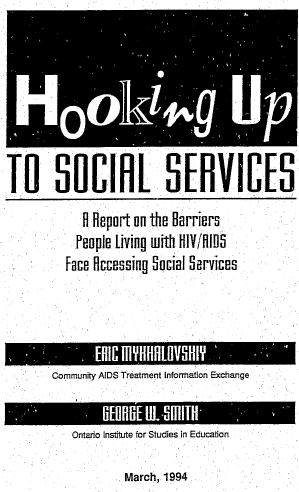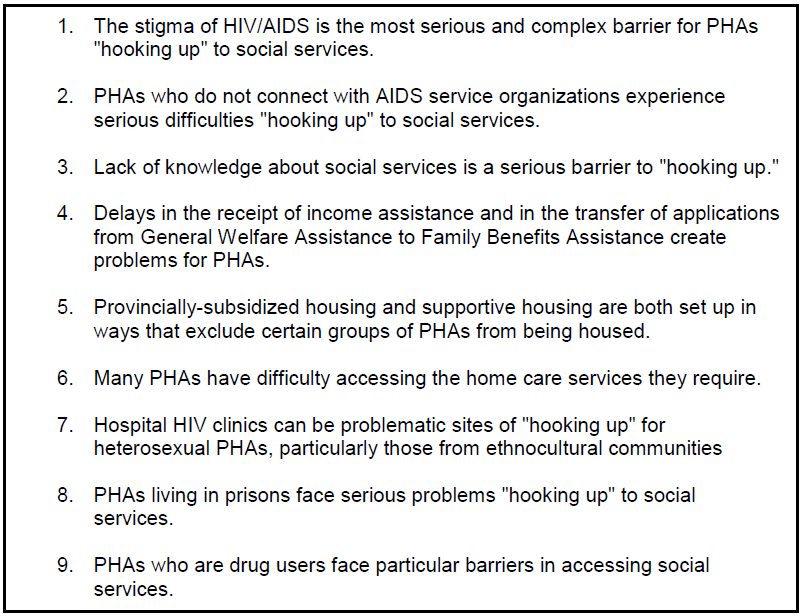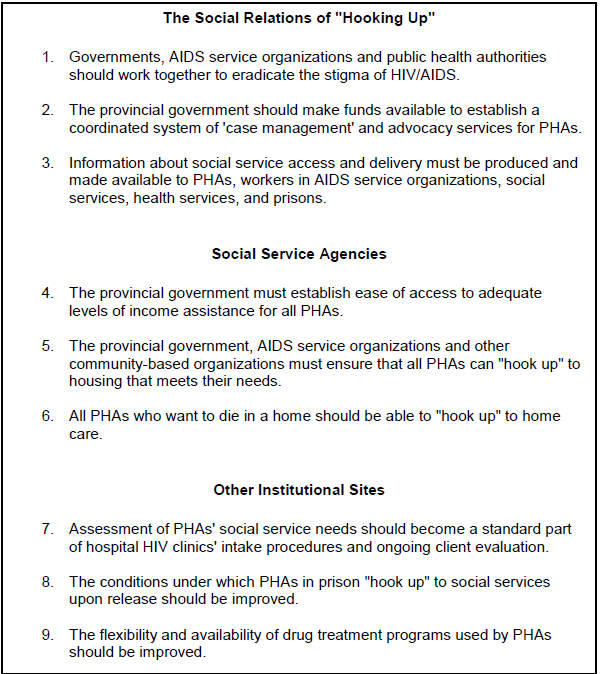The “Hooking Up” project exemplifies George Smith’s approach to
research, activism, and social change.
Project Design
Between 1990 and 1993, George Smith and Eric Mykhalovskiy conducted research into the work that people living with HIV/AIDS do to access or “hook up” to social services in Toronto, Ontario. Using Institutional Ethnography (IE), they conducted 120 interviews in three phases. In the first phase, they conducted interviews with 70 people living with HIV/AIDS (PHAs) with diverse backgrounds and social locations. Next, they conducted 40 interviews with individuals from a wide range of community-based agencies, organizations and services, including AIDS service organizations, hospital HIV clinics, organizations serving street-involved youth, primary care physicians’ offices, hemophilia organizations and housing facilities. In the third phase, George and Eric interviewed ten government workers who were responsible for the delivery of social services to PHAs. The research and final report were completed by Eric, following the decline in George’s health due to HIV/AIDS-related illnesses.

Lifework
Informed by IE and feminist theories of domestic and reproductive labour, George and Eric conceptualize work (or “lifework”) to encompass people’s everyday practices and “doings.” PHAs, they argue, have to “radically re-vise their lives and expectations. They are forced to live differently. How people reorganize their everyday lives under the conditions of HIV/AIDS. consequently, can be viewed… as work.” (1990). In their research, George and Eric “insist that people with HIV/AIDS put time, thought, and energy into their daily living and that this “life work” must, of necessity, be organized in relation to the social services system they depend on.” (ibid).
Hooking Up
As outlined in their research proposal, the process through which PHAs access social services is rarely straightforward. “Within the HIV community,” George and Eric write, “stories constantly circulate about the problems people have getting the social services to which they are entitled” (1990). As they learned through their research, “hooking up” to social services can be “confusing and exhausting” for PHAs, and is experienced differently depending on one’s location in the social relations of class, race, gender, ethnicity, and sexual orientation. Their research and report centrally engaged with questions of class and the social organization of poverty, which were often eclipsed in AIDS organizing.
In their final report, George and Eric outline nine core findings from their research:

They also offer a nine-point strategy for alleviating the barriers PHAs face when “hooking up” to social services:
